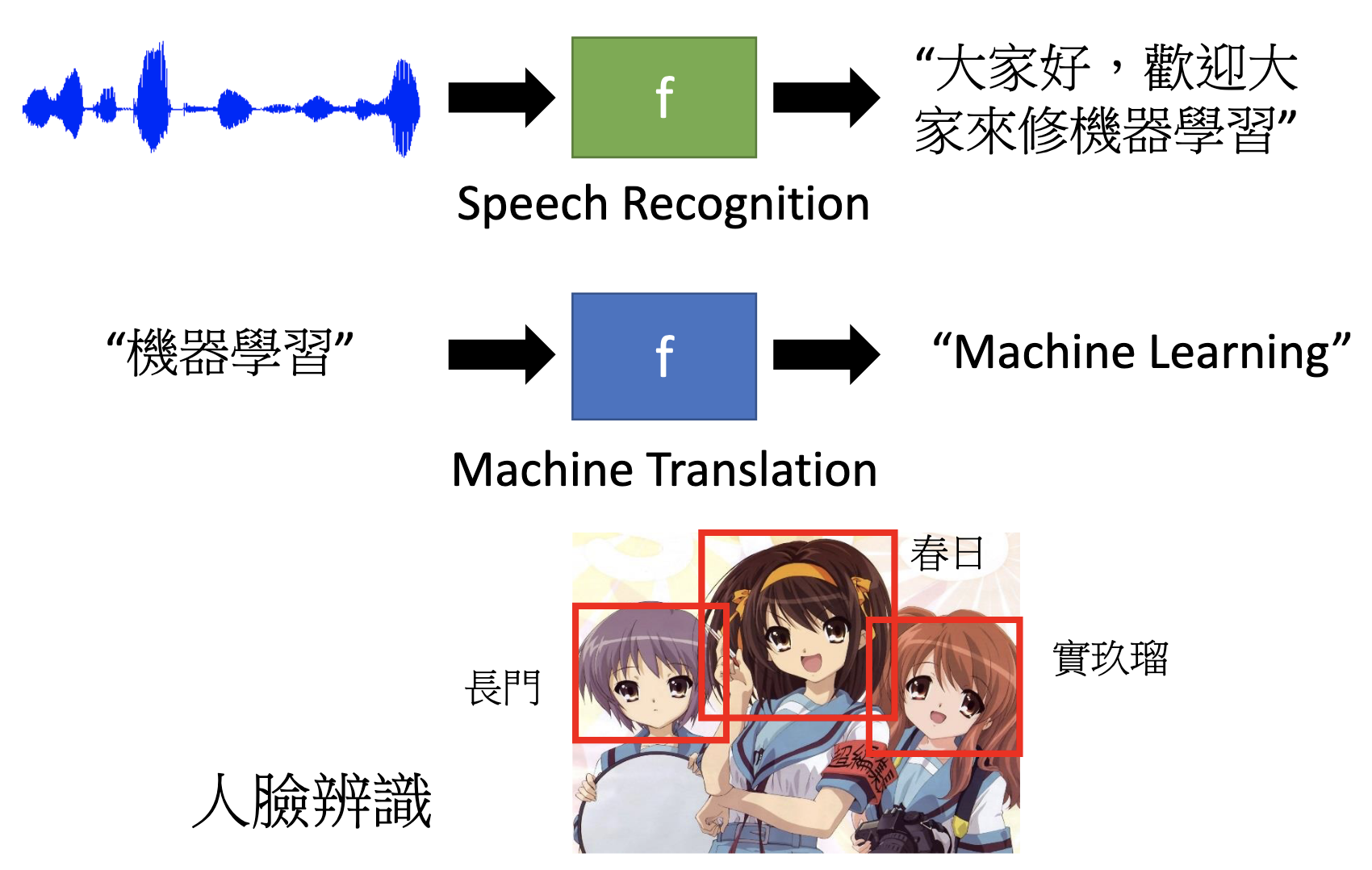Notes for Prof. Hung-Yi Lee's ML Lecture 0, Introduction
Definitions & Relationships of Terminologies
Artificial intelligence: The overall goal of the research, i.e. to let machines be as intelligent as human. Machine Learning: An approach to AI, i.e. to let machines learn. For many problems, we can not hand-craft the rules to build a machine, so we collect data for the problem and let the machine learn from the data.
Deep Learning: Another approach to AI by ANN of more then 3 layers.

My comments: The definitions actually varies by context.
The 3 Steps of Machine Learning, Simplified
- Define a set of functions.
- Define goodness of functions.
- Pick the best function.
#1 is “choose a ML model”, which specifies the set of functions; #2 can be “define a loss function”; #3 is “training”.
Types of Tasks
Regression: input -> scalar, e.g. predicting the PM 2.5 value.
Classification: input -> Y/N (binary, e.g. spam identification, mail -> is a spam.) or classes (e.g. Go, current board -> the best location of the next step).
Strutured Learning: generate outputs with further structured informations, e.g. sentences (which has grammar) or to recognize objects in an image and also frame the location of the object.

Types of Scenarios
In other words, “what kinds of data we can get”. Usually we cannot control the scenarios.
Supervised learning: All the data are labelled, i.e. every sample of the data is a pair of input & output. Also, like “learn from teacher”.
Labeling enough data may be labor-consuming or difficult, sometimes we want to avoid it, so there’re also semi-supervised learning, transfer learning, unsupervised learning and reinforcement learning.
Semi-Supervised Learning: Some data are labelled & some data are not labelled. There may be only a few labelled data.
Transfer Learning: There’re some (fewer) labelled data of the task, and there’re some labelled or unlabelled data of other unrelated tasks.
Unsupervised Learning: The data are al unlabelled, i.e. only inputs or outputs are known.
Reinforcement Learning: to train by scores of outputs from inputs; learn from critics.
Relationships between Scenarios, Tasks & Methods

Reference
Youtube Link ML Lecture 0-1: Introduction of Machine Learning
Youtube Link ML Lecture 0-2: Why we need to learn machine learning?